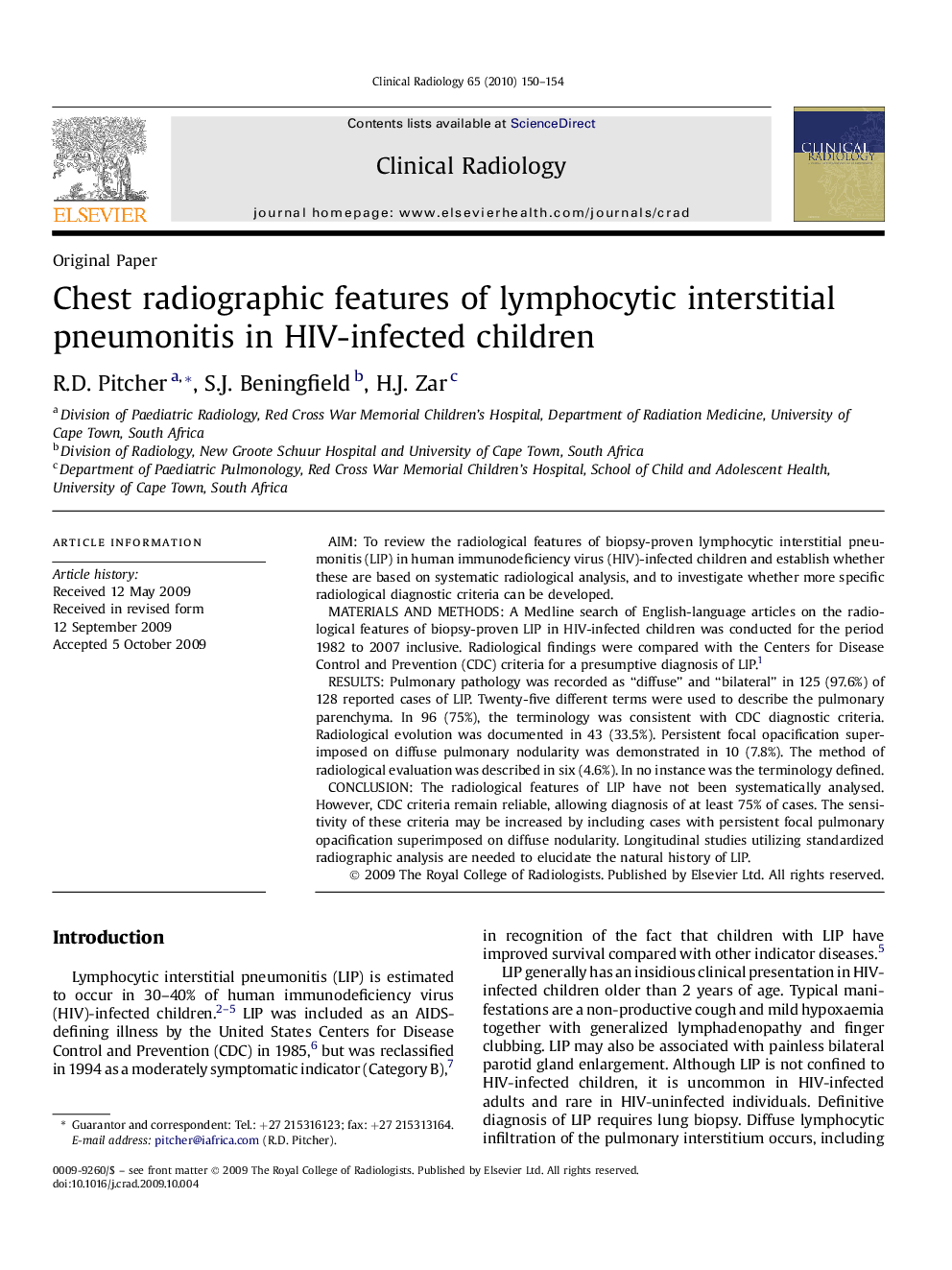| Article ID | Journal | Published Year | Pages | File Type |
|---|---|---|---|---|
| 3983721 | Clinical Radiology | 2010 | 5 Pages |
AimTo review the radiological features of biopsy-proven lymphocytic interstitial pneumonitis (LIP) in human immunodeficiency virus (HIV)-infected children and establish whether these are based on systematic radiological analysis, and to investigate whether more specific radiological diagnostic criteria can be developed.Materials and methodsA Medline search of English-language articles on the radiological features of biopsy-proven LIP in HIV-infected children was conducted for the period 1982 to 2007 inclusive. Radiological findings were compared with the Centers for Disease Control and Prevention (CDC) criteria for a presumptive diagnosis of LIP.1ResultsPulmonary pathology was recorded as “diffuse” and “bilateral” in 125 (97.6%) of 128 reported cases of LIP. Twenty-five different terms were used to describe the pulmonary parenchyma. In 96 (75%), the terminology was consistent with CDC diagnostic criteria. Radiological evolution was documented in 43 (33.5%). Persistent focal opacification superimposed on diffuse pulmonary nodularity was demonstrated in 10 (7.8%). The method of radiological evaluation was described in six (4.6%). In no instance was the terminology defined.ConclusionThe radiological features of LIP have not been systematically analysed. However, CDC criteria remain reliable, allowing diagnosis of at least 75% of cases. The sensitivity of these criteria may be increased by including cases with persistent focal pulmonary opacification superimposed on diffuse nodularity. Longitudinal studies utilizing standardized radiographic analysis are needed to elucidate the natural history of LIP.
